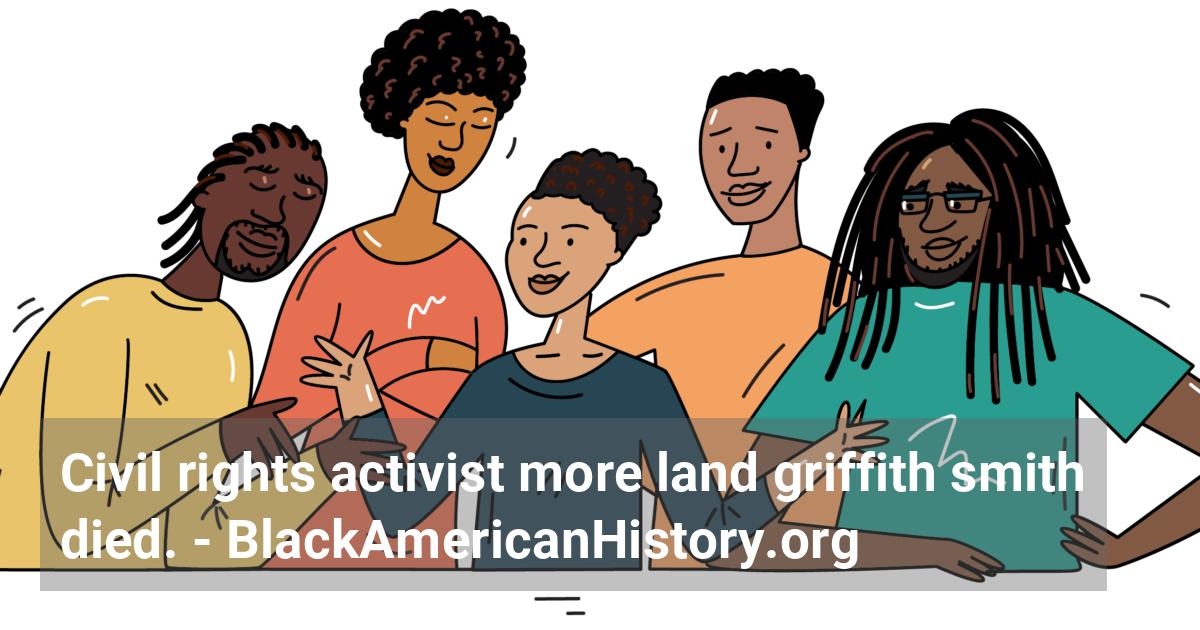Home / Full timeline / Moreland Griffith Smith, a retired architect and civil rights activist, dies of heart failure.
 Moreland Griffith Smith, a retired architect and civil rights activist, dies of heart failure.
Moreland Griffith Smith, a retired architect and civil rights activist, dies of heart failure.
1989 (Jun 26)
Moreland Griffith Smith, a retired architect and civil rights activist, died of heart failure in Atlanta, Georgia. Smith was born December 15, 1906, to Charles M. and Jennie Moreland Smith in Adrian, Michigan. He received a bachelor's degree from Auburn University in Alabama, a master's degree in architecture from the Massachusetts Institute of Technology, and studied at the Ecole des Beaux-Arts in Fontainebleau, France. In 1954, Smith went to the office of his friend, William "Tacky" Gayle, mayor of Montgomery, Alabama, to discuss what he termed "a simple matter of fairness"—the issue of seating for Blacks on city buses. The meeting occurred before Rosa Parks refused to give up her seat on one such bus and the launching of the famed Montgomery bus boycott. Two issues had already surfaced: Blacks were forced to stand on buses when "the white section" was nearly empty, and they had to pay their fares up front, exit, and re-enter through the back door (sometimes the bus driver would pull away before they could do so). Smith urged Mayor Gayle to end both of these practices. Because of his support for the demands of Blacks regarding seating on buses, Smith was berated numerous times by whites. Among his detractors was Governor George C. Wallace, who allegedly tried to keep Smith from getting architectural jobs in the area. One bank, in fact, declined to extend a line of credit to Smith's architectural firm. Yet he "stubbornly" served on local civil rights committees and was a trustee at Tuskegee Institute. Smith hired many Black architects and proposed some for membership in the American Institute of Architecture (AIA). These activities led to social ostracism among Montgomery's white community for Smith and his wife, Marjorie. In 1965, Smith lost the lucrative architectural business he had founded and built up over the years, and subsequently moved to Atlanta. In 1987, the Atlanta chapter of the AIA honored Moreland Smith "for his conviction and courage during the tumultuous early years of the Civil Rights Movement."
References:
- • Hornsby, Alton. Chronology of African-American History: Significant Events and People from 1619 to the Present. Detroit: Gale Research, 1995.
